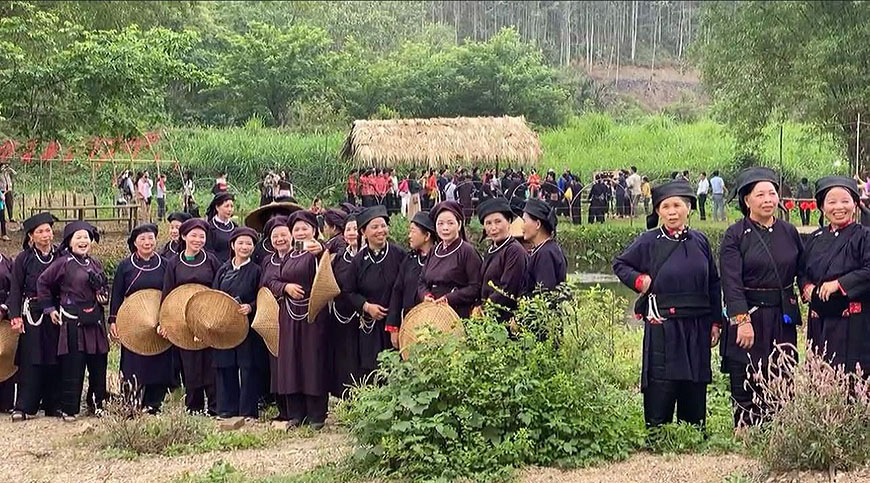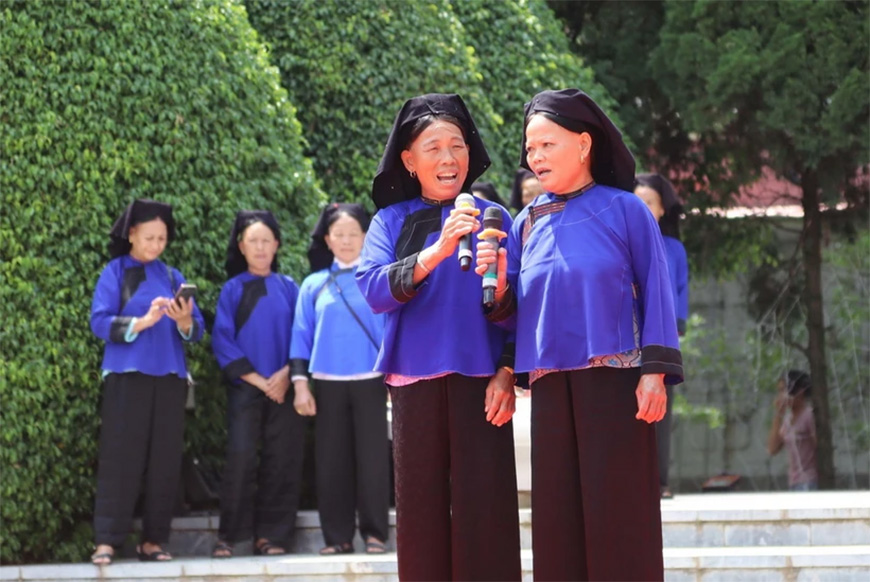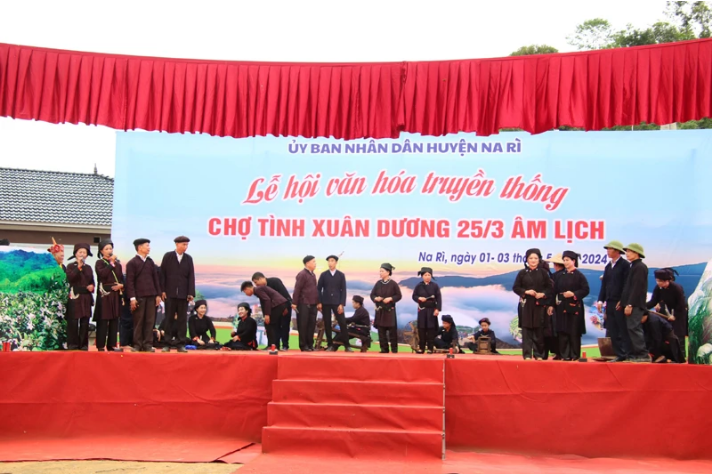Bac Kan province has its own love market tradition
In Vietnam, particularly in the northern mountainous regions, the "love markets" are a unique and fascinating sociocultural phenomenon. Far from being mere places of commerce, these events perpetuate traditions linked to romantic encounters and the maintenance of social ties.
A diversity of traditions to discover
Various love markets can be found throughout the country, each with its own distinct characteristics. Among them, the Khau Vai market (Ha Giang Province) is renowned for its originality. Other examples exist in
Sapa (Lao Cai), Bao Lac (Cao Bang), and Moc Chau (Son La). It is important to emphasize that the expression "love market" actually encompasses a wide variety of traditions. Some are centered on the search for new partners, while others serve as annual reunions for former lovers. This diversity calls for a nuanced understanding of these practices.
Bac Kan and the Xuan Duong Love Market
The province of Bac Kan, nestled in the mountains of northeastern Vietnam, also has its own love market tradition. This tradition mainly flourishes around the Xuan Duong love market. The province is distinguished by its rich ethnic mosaic, where the Tay and Nung communities play a predominant role and are closely linked to the Xuan Duong market. Indeed, the Tay and Nung constitute a significant portion of Bac Kan's population, representing over 88% of the ethnic groups. This close connection underscores the importance of these traditions in preserving cultural identity and strengthening social cohesion within these communities.

Love Market Bac Kan : Preserving cultural identity
The origins of the Love Market in Bac Kan
The history of the love market in Bac Kan is inseparable from
the legend of the Xuan Duong love market. According to the story, this market originated from the tale of a deeply loving couple who were separated by fate. Moved by their plight, the villagers decided to help them reunite once a year, on the 25th of the lunar March, in a place called "
Na Ri," which later became the Na Ri district. (Some versions specify that Na Ri was the name of the field they owned together). Thus was born the Xuan Duong love market, a place of reunion and commemoration.
It is interesting to compare the origin of the Xuan Duong market with that of the Khau Vai market in Ha Giang, which also stems from a tragic love story between a Nung man and a Giay woman whose union was forbidden. Similarly, the Sapa love market finds its roots in a social gathering organized to allow young people from various ethnic minorities (H'Mong, Dao, Tay) to meet and court each other. Although all these love markets share romantic origins, the specific stories and initial purposes vary, reflecting regional and ethnic diversity. For example, the Khau Vai market is specifically dedicated to reunions of former lovers, while the Sapa market is more focused on finding new partners. This well illustrates the variety of traditions grouped under the term "love market."
►
Do you know the Long Tong Festival in Ba Be Rituals and customs at the Xuan Duong market
The Xuan Duong love market is not limited to its commercial aspect. Above all, it is a privileged meeting place for former lovers, old friends, and relatives. Participants come to the market adorned in their finest traditional costumes. Former lovers reunite to share their emotions and news of their lives. It is not uncommon for married couples to attend the market together, with each partner meeting their former loves with the consent and trust of their spouse. These reunions are ephemeral and do not disrupt daily life or current relationships. The market also offers singles the opportunity to forge new relationships. The acceptance of past relationships in the context of the love market demonstrates a unique cultural perspective on love, memory, and marital relations within the Bac Kan communities.
Having become a meeting place not only for former lovers but also for friends, families, and neighbors, this market is punctuated by the Sli singing, an alternating Nùng chant that enlivens exchanges and reunions. The commune of Xuan Duong is, in fact, considered the cradle of this tradition. The Sli singing allows people to express their feelings, share their memories, and rekindle bonds. Singers, often in couples, talk about everything and nothing, but especially about their love and their wishes for happiness and prosperity. Singing takes place everywhere, whether at festivals, housewarming parties, or rural gatherings.
There are two forms of Sli singing: the free form and the organized form. The free form often manifests in daily life, particularly at markets, festivals, family visits, birthdays, weddings, and funerals. The space dedicated to free-form Sli singing is very varied: fields, hills, stream banks, markets... Each group of Sli singers generally has at least two people. The organized form of Sli singing takes place in a more intimate setting, such as a house, restaurant, or village. It involves at least two people, a man and a woman, and attracts a large audience, from the youngest to the oldest. Performances can last all night, or even until the next morning, and sometimes even three consecutive nights.

Sli singing, the soul of the Nung people - VietnamPlus/Nguyen Quang Duy
But the lyrics of the Sli song are not limited to love stories. They address all aspects of life, from natural phenomena to historical events, including significant figures. Sli singing promotes conviviality, harmony between man and nature, and helps to make life gentler and more joyful. Thanks to it, couples have formed, friendships have been born, and national unity has been strengthened. This speaks to its cultural importance!
The province of Bac Kan has, in fact, decided to highlight this tradition in the context of cultural tourism, organizing shows with numerous pairs of singers during the annual market. The market now attracts Vietnamese and foreign visitors and is part of a national project to promote the traditions of ethnic minorities in the mountainous regions of Northern Vietnam.

The small event has transformed into a cultural and tourist festival
From a local tradition to a major cultural festival
The Xuan Duong love market is an event where the traditional cultural values of the participating ethnic groups (Tay and Nung) are preserved and showcased. Traditional songs (Sli, but also Then and Luon) and musical performances (Tinh) play an essential role in this cultural transmission, particularly to the younger generations. Initially, it was just an annual rendezvous for former lovers, a bit like an alumni reunion, but more romantic. But over time, this small, intimate event has transformed into a veritable cultural and tourist festival. Now, people come to meet their exes, friends, and family, and to enjoy the many cultural activities, notably the famous Sli singing.
And this metamorphosis has not gone unnoticed! In 2021, Sli singing was inscribed on the national intangible cultural heritage list. Since then, the provincial authorities have decided to ride this wave of success by integrating the market into a local tourism development project.
In comparison with other love markets in Vietnam, such as those of Khau Vai and Sapa, the Xuan Duong market is distinguished by its emphasis on reunions and its strong connection to the local legend. While some markets have evolved to focus more on flirting or weekly tourism, Xuan Duong retains its annual character, its role of commemoration and social connection.
Despite the changes in society, the tradition of the love market in Bac Kan, and more particularly the Xuan Duong market, remains an essential cultural and social element. It has adapted to modernity while preserving its soul: a community gathering where love, memory, and tradition are the key words.
Pictures from the Cho Tinh Xuan Duong Facebook page